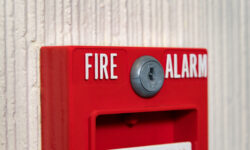The Perils of Neglecting Security Systems Maintenance and Why You Should Care
It is up to integrators to explain to their clients the importance of maintaining security systems. Not doing so can lead to tragedy.
Maintenance issues can have seriously adverse effects on your clients.
When I bring up the topic of maintenance, many of you reading this might yawn or turn the page. Those who ignore the importance of maintenance, however, do so at their own peril.
According to Campus Safety’s 2016 Video Surveillance Survey, more than half of respondents said their organization’s security cameras are experiencing moderate to significant maintenance issues. Its 2017 Access Control Survey found that a third of respondents rate their card access control maintenance issues as somewhat to extremely challenging.
Although these stats are concerning, my gut is telling me — as well as many of you who are responsible for maintaining your electronic security systems — that the maintenance issue is much bigger than most of us realize.
I suspect it’s a case of “We don’t know what we don’t know” and that hospitals, schools and universities haven’t developed the systems and processes they need to track when their security equipment requires updates or repairs.
Let’s take video surveillance systems as an example. Schools, universities and hospitals are putting up security cameras at record pace, and most are not monitored by humans.
What often happens after a camera is installed is that no one pays attention to it until a year or two later when an incident happens and security or law enforcement staff members try to review the footage.
When they do this, they might find that the camera doesn’t work for one reason or another. Perhaps something as simple as a tree branch is blocking the camera and rendering it useless for investigative purposes.
An incident doesn’t even have to occur for your upkeep issues to pose challenges. If the local TV news affiliate finds out about your maintenance problems, you can bet that your problems will be prominently featured on the 5 o’clock news.
This happened in May to one school district in Georgia, where a local news crew reviewed the district’s repair logs and discovered that the average response time for camera repairs was 61 days. Four cameras were out of order for more than a year.
The same issue applies to two-way radios, which often just sit in closets — possibly for months or even years — until something bad happens.
When there is an emergency, the radios might not work because no one ever set up a maintenance schedule to make sure the batteries weren’t dead. (Also, teachers, nurses, administrators and other staff members who only use radios during emergencies might not remember how to use them or even where they are located, but that’s another issue.)
It’s also important to remember that physical security equipment upkeep doesn’t just involve replacing worn-out parts, adjusting camera angles, trimming trees and installing new batteries. Much of the maintenance associated with today’s physical security equipment involves software upgrades.
Unfortunately, some older systems currently running in healthcare and educational environments are no longer supported by the manufacturers that made them.
When the software in these systems is out of date, the security camera or card access system or HVAC solution not only doesn’t work well (or at all), it is more vulnerable to cyberattacks.
The WannaCry ransomware attack that affected more than 150 countries in May, for example, was so devastating because it attacked older computers with operating systems that weren’t updated.
Although I’m unaware of any cases where WannaCry impacted any North American physical security solutions, it’s a good example of the risks posed by old software.
The solution to these issues is having in-house staff or contractors who regularly and frequently do maintenance on all of your physical security systems. These individuals must also work closely with your campus or district IT department so that software updates are implemented promptly.
Much like an adorable pit bull sleeping in the corner, the upkeep of physical security systems can fly under our radar until it bites us. Both the pit bull and security solutions deserve respect and regular attention so they will behave/operate properly.
Editor’s Note: The following story first ran in Security Sales & Integration’s sister publication Campus Safety.
If you enjoyed this article and want to receive more valuable industry content like this, click here to sign up for our FREE digital newsletters!

Security Is Our Business, Too
For professionals who recommend, buy and install all types of electronic security equipment, a free subscription to Commercial Integrator + Security Sales & Integration is like having a consultant on call. You’ll find an ideal balance of technology and business coverage, with installation tips and techniques for products and updates on how to add to your bottom line.
A FREE subscription to the top resource for security and integration industry will prove to be invaluable.







